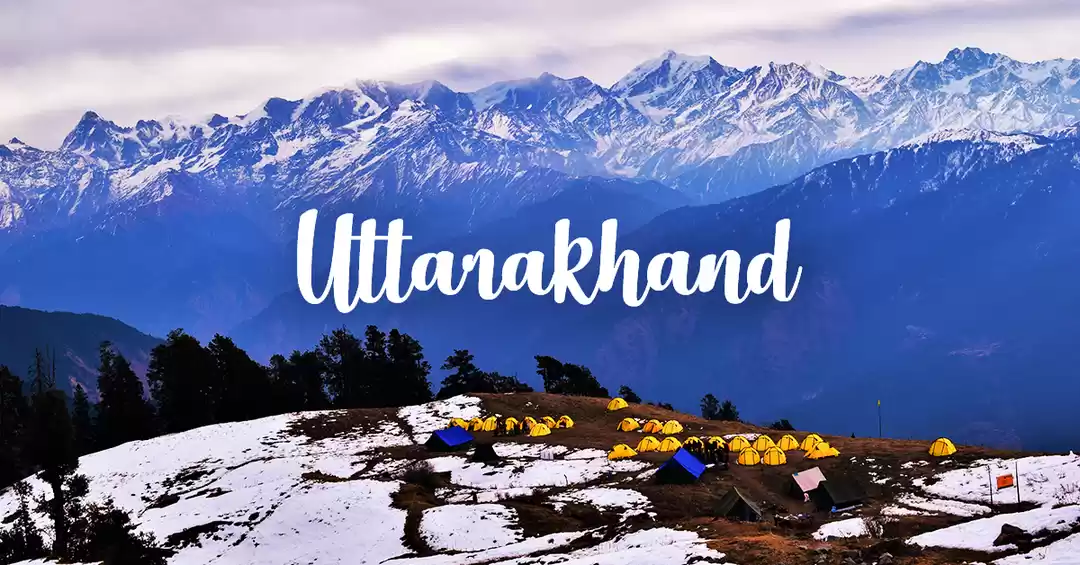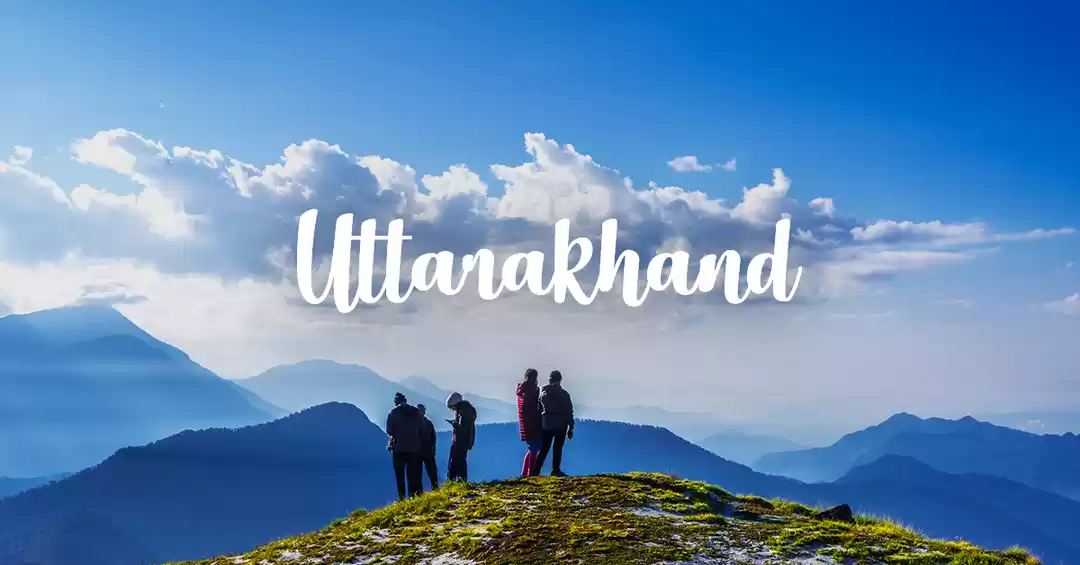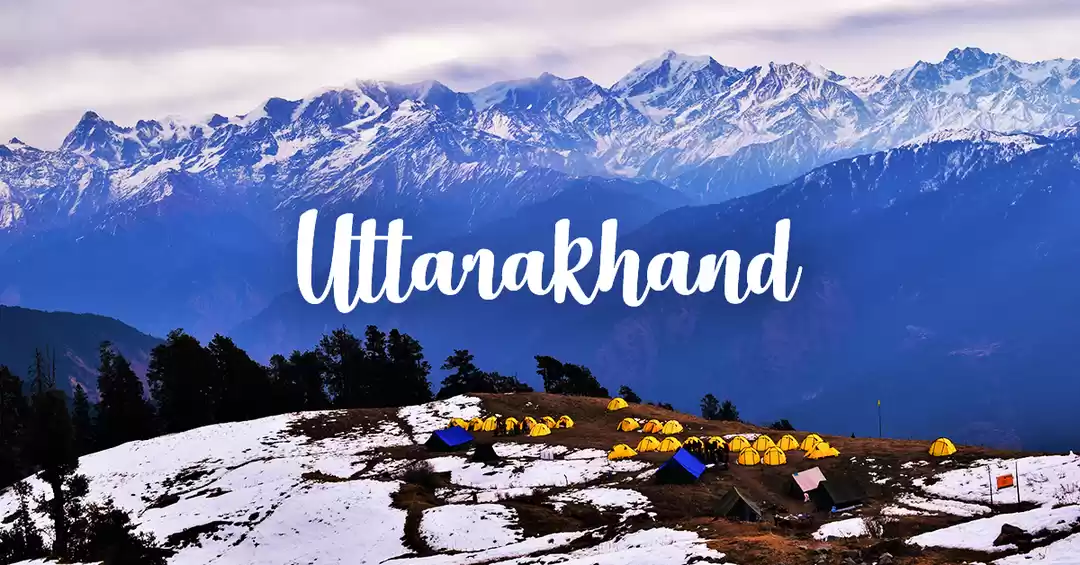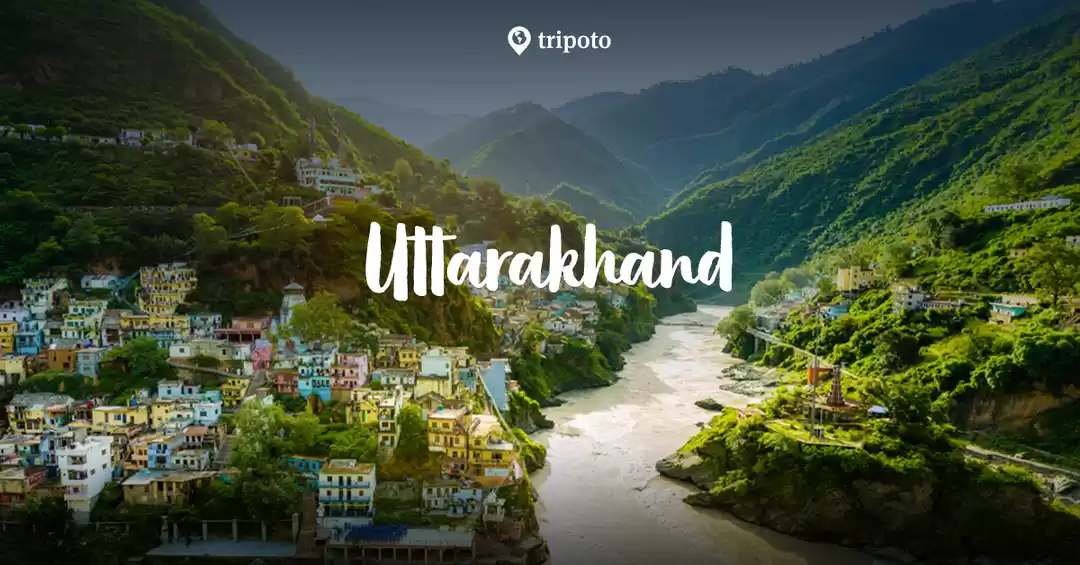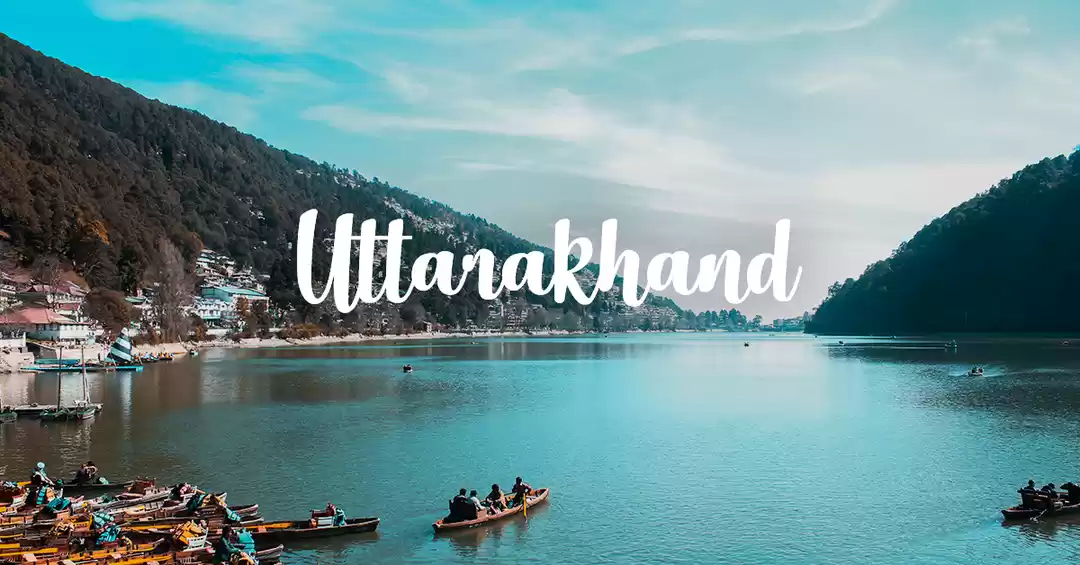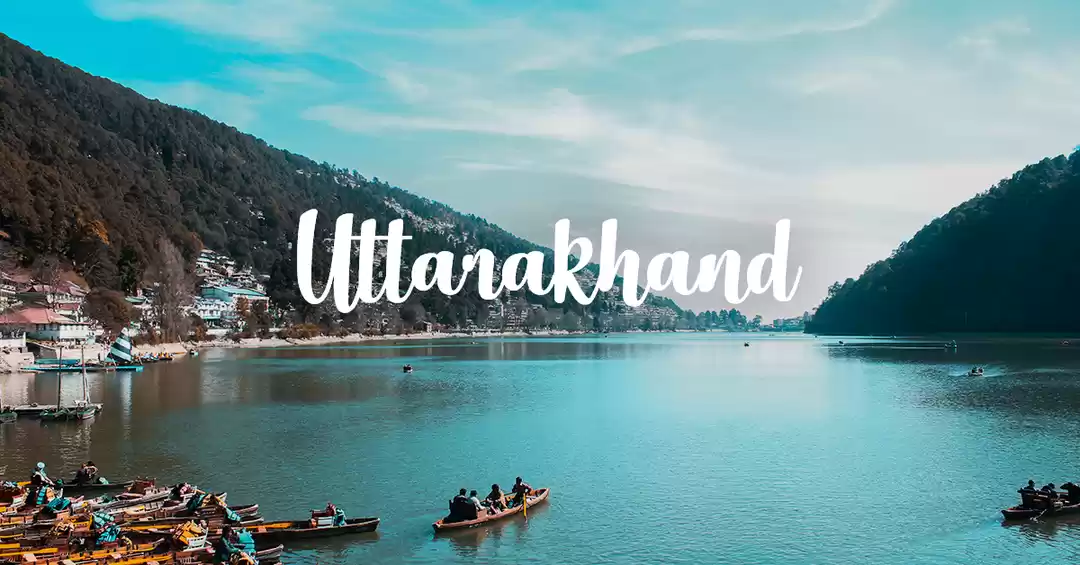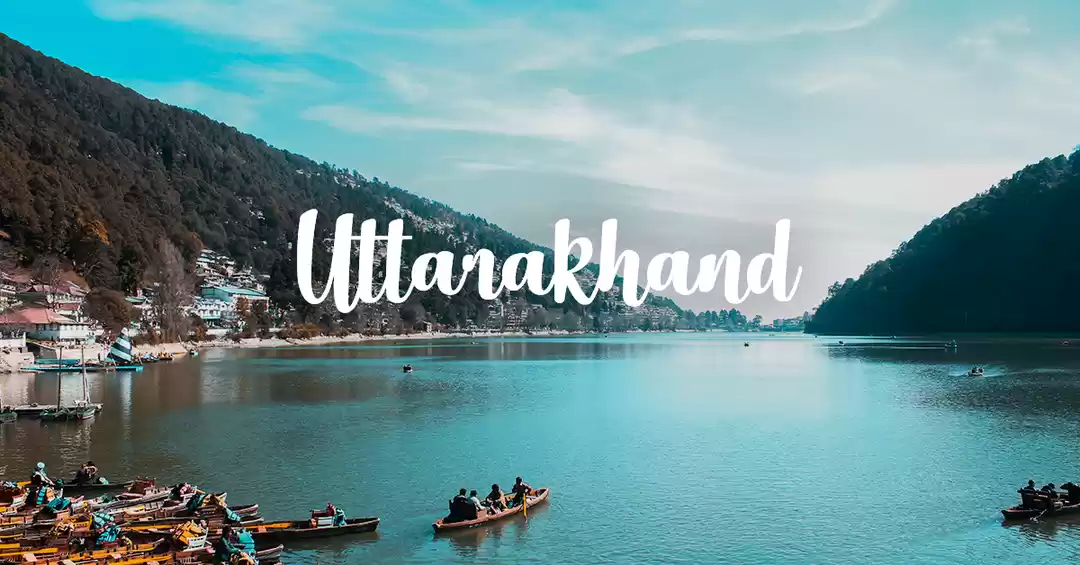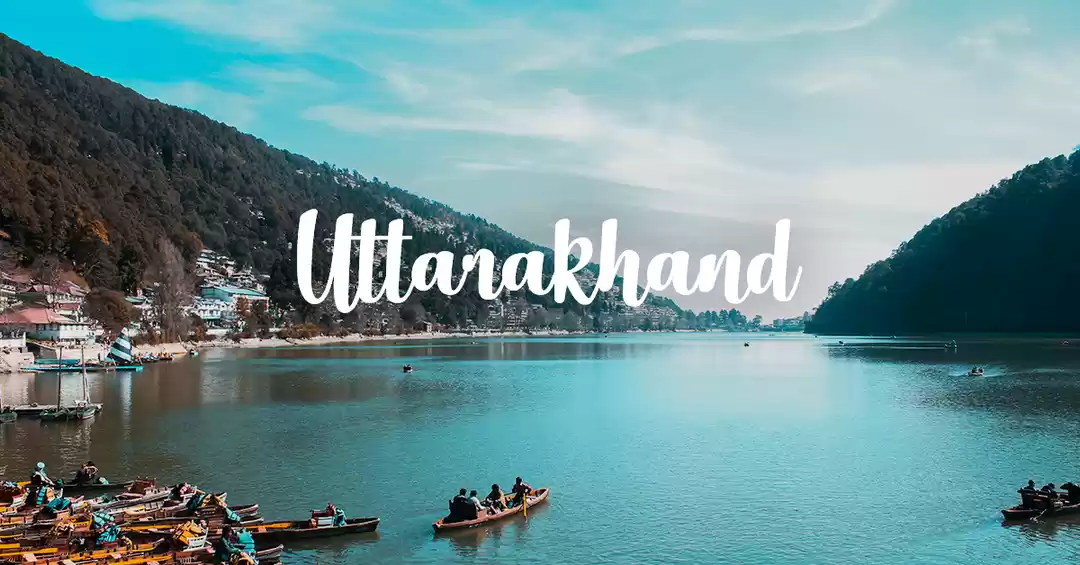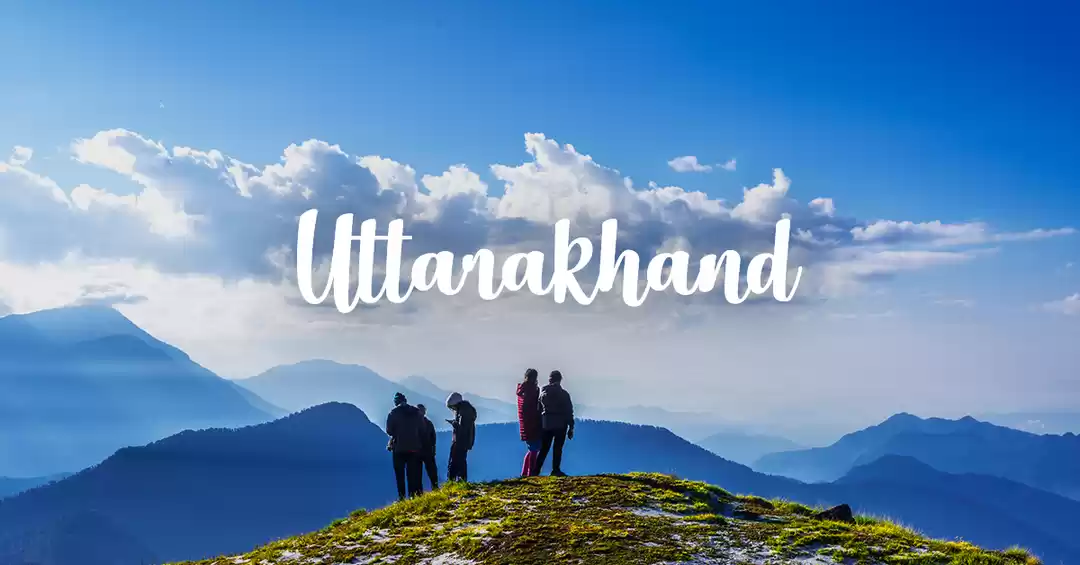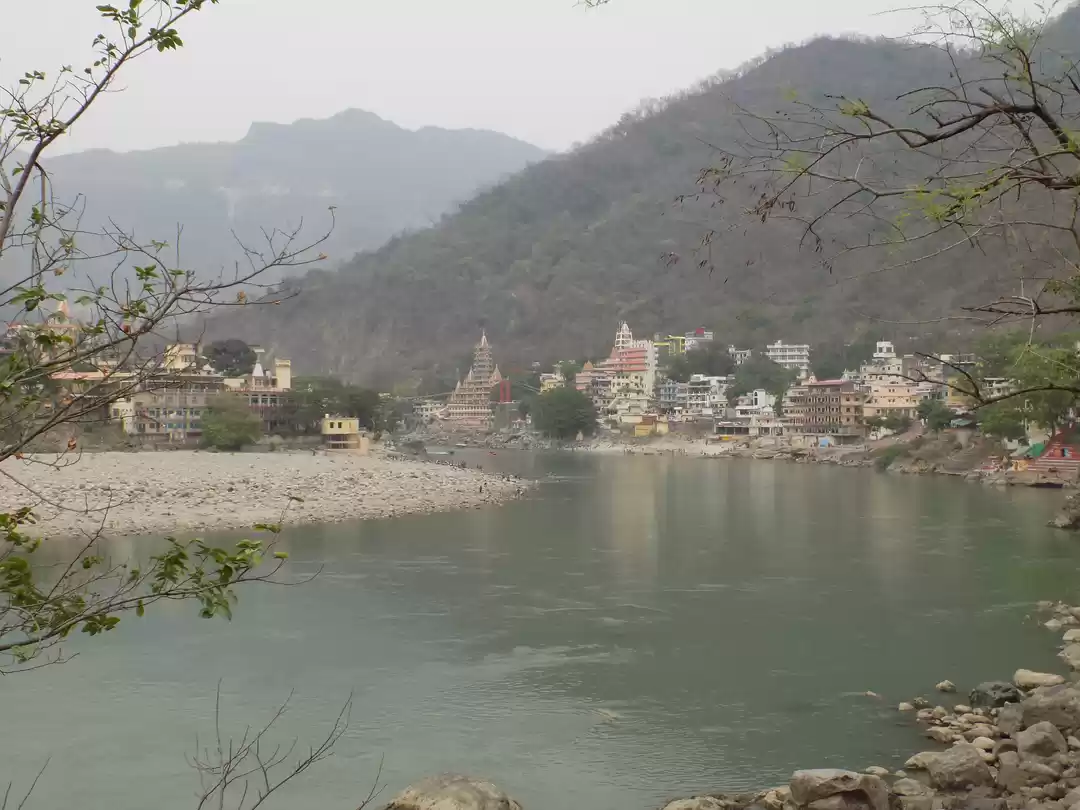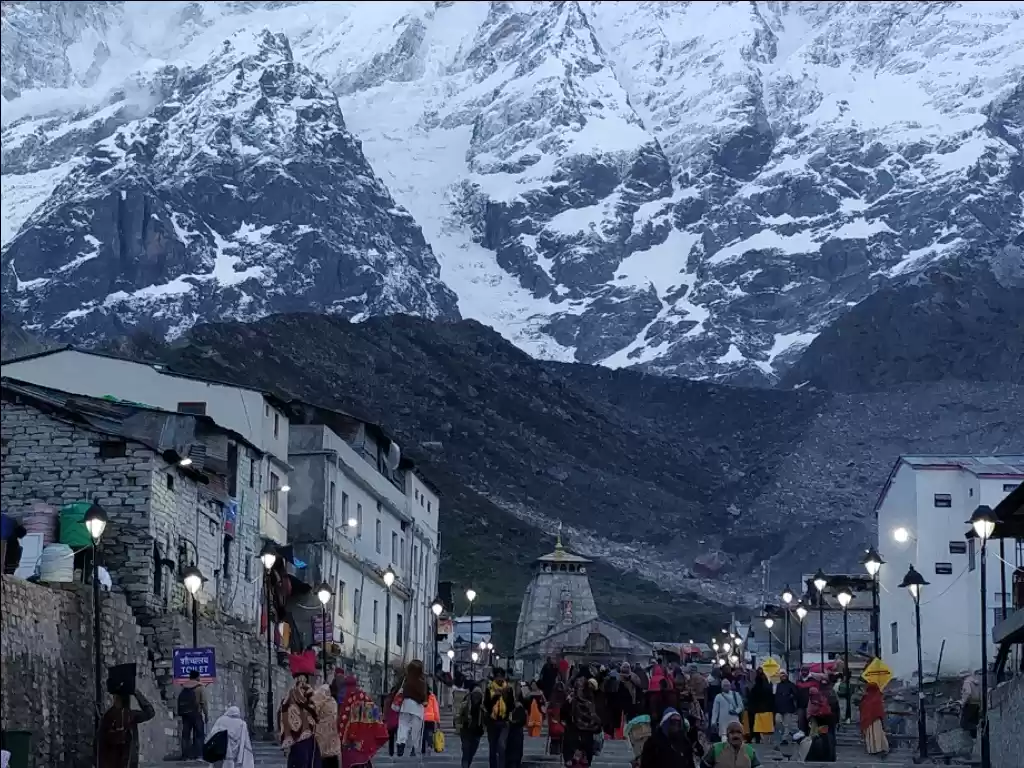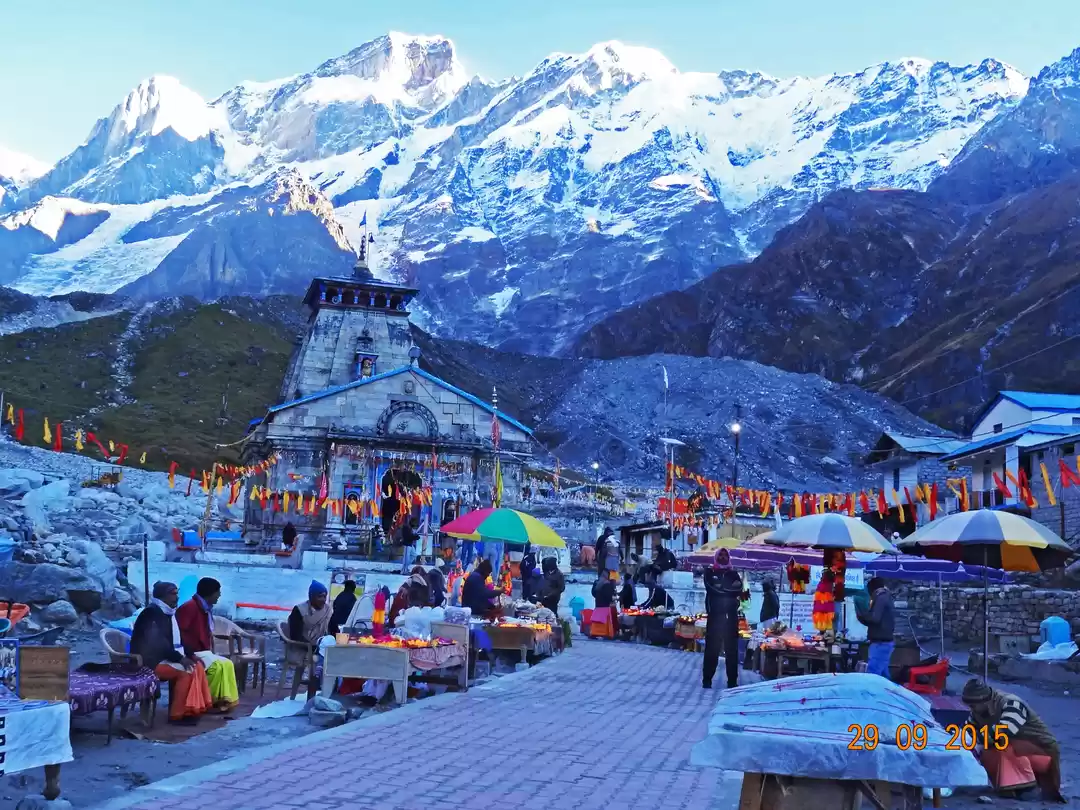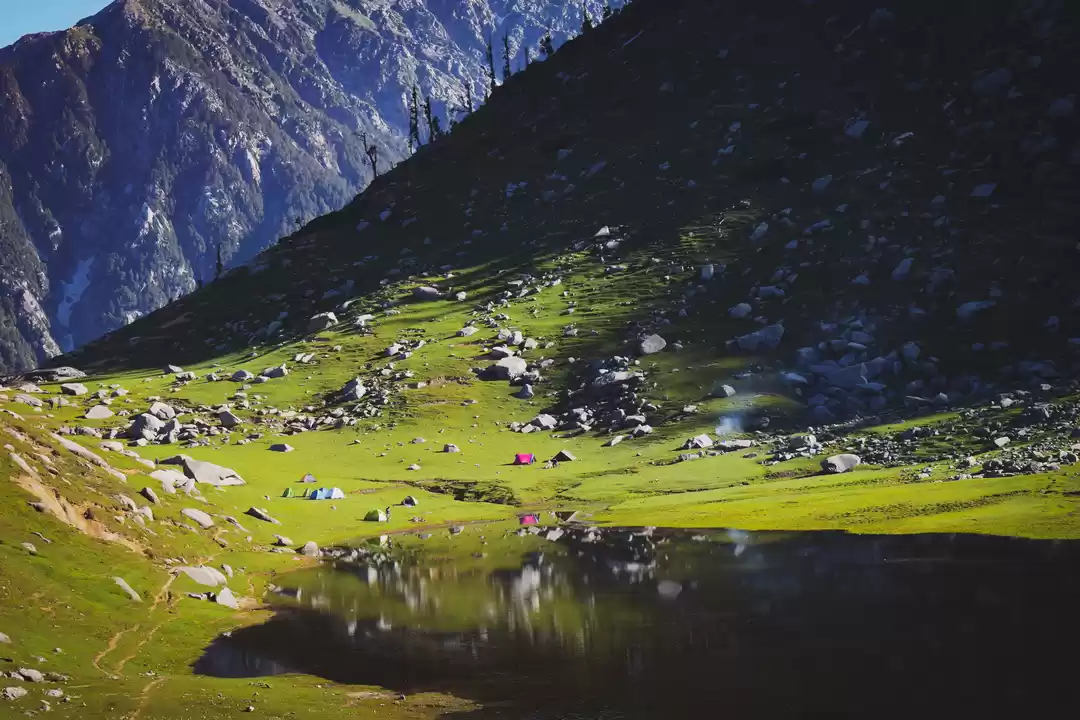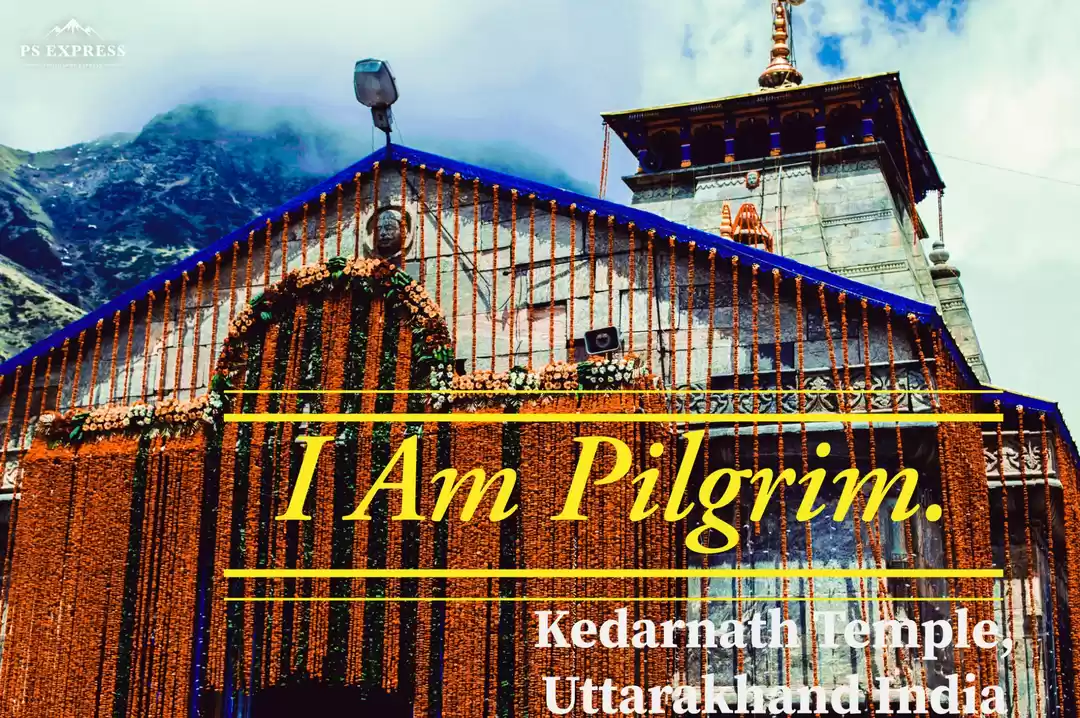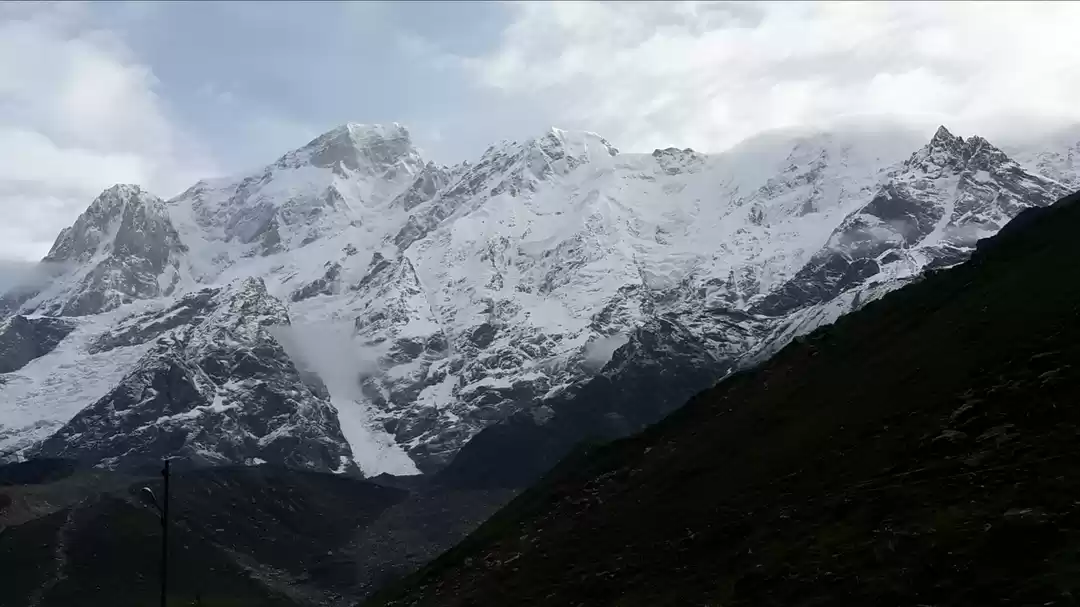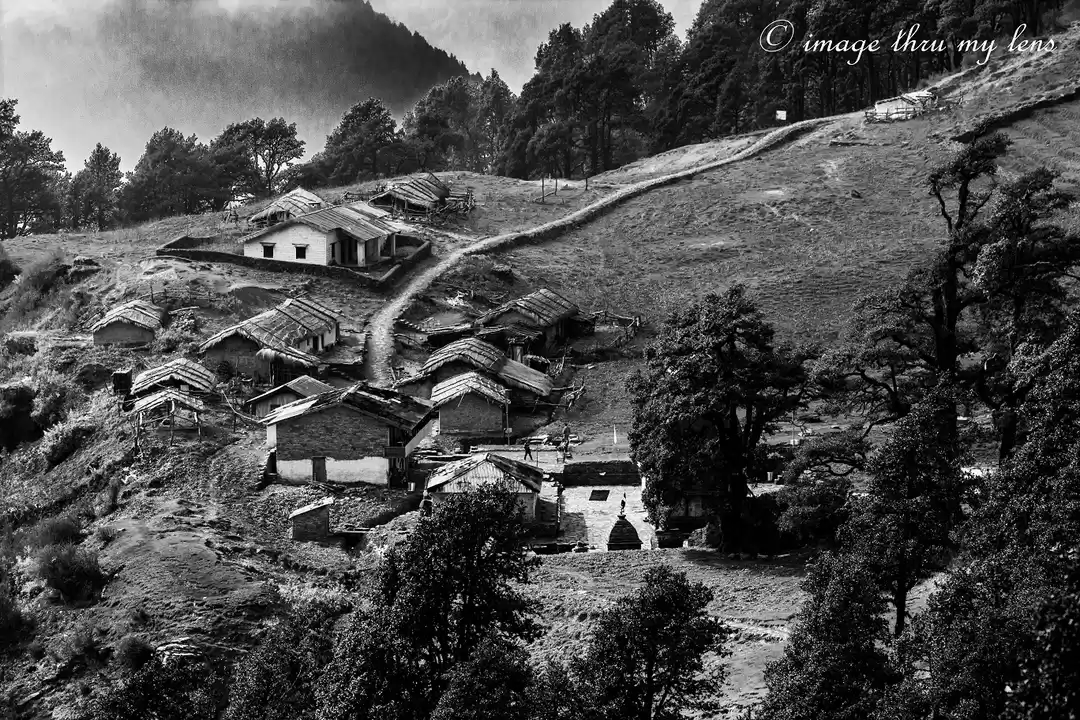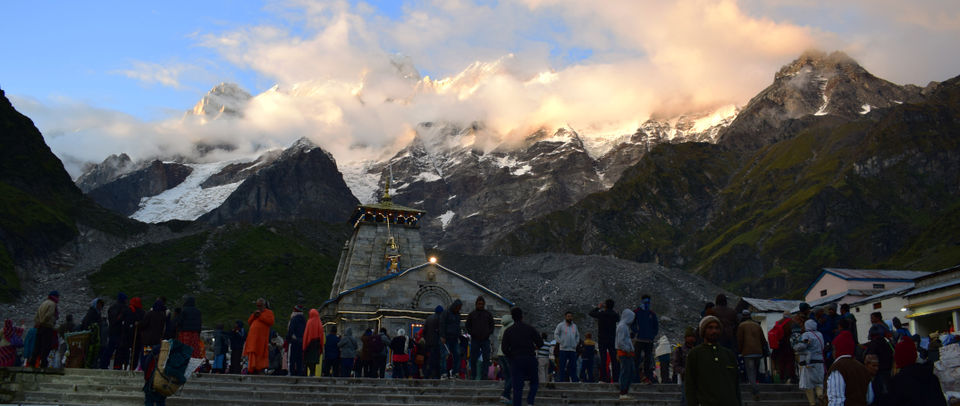
We were six people trekking to Kedarnath shrine. We had decided that we'll trek by foot. It may take a whole day but it was fine as we had book GMVN for the night to stay at Kedarnath.
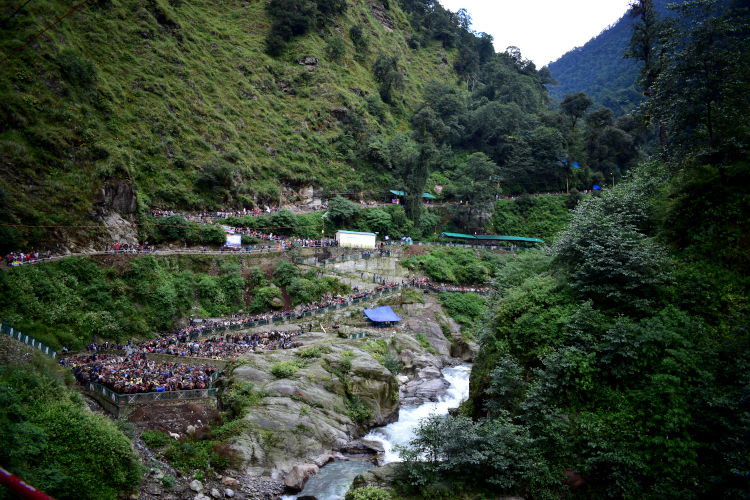
As we started to walk from Gauri Kund, Basak aunty began to feel little anxious. She was in a dilemma whether she'll be able to walk all the way to the temple. To make the matter worse, the horse owners began to tell us, "It's a difficult trek, not possible to walk all the way - hire a horse" and so on. We all tried to encourage her but in vain, so uncle and aunty finally hired horses from Gauri Kund to Kedarnath from Rs.2500. One have to show their registration confirmation (either on phone or in print) and the photo ID (the one which you mentioned in registration form). So they went off on the horse and we remaining four walked our way to reach the top.
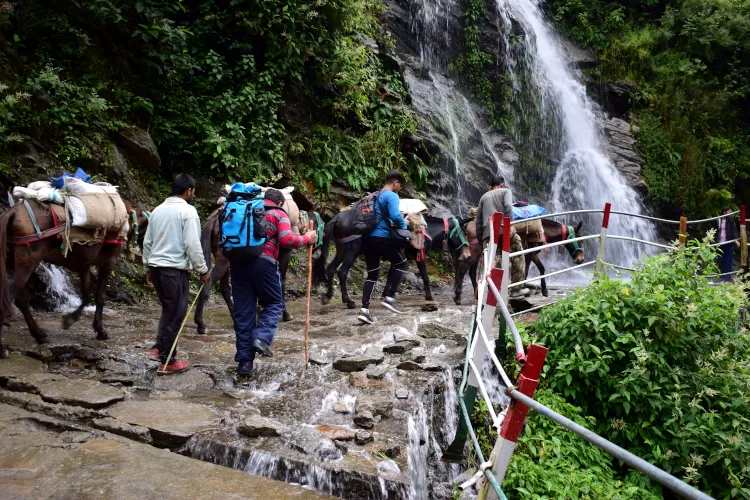
The trekking route to the Kedarnath shrine wasn't a easy one, if you're physically fit then you won't have much difficulty in walking and completing the trek. All those beautiful surrounding made the tiring and wearing journey not only bearable but utterly enjoyable too. The trek route was surrounding by lush green valley, wild flowers and splendid waterfalls made it extremely pleasant to trek on.
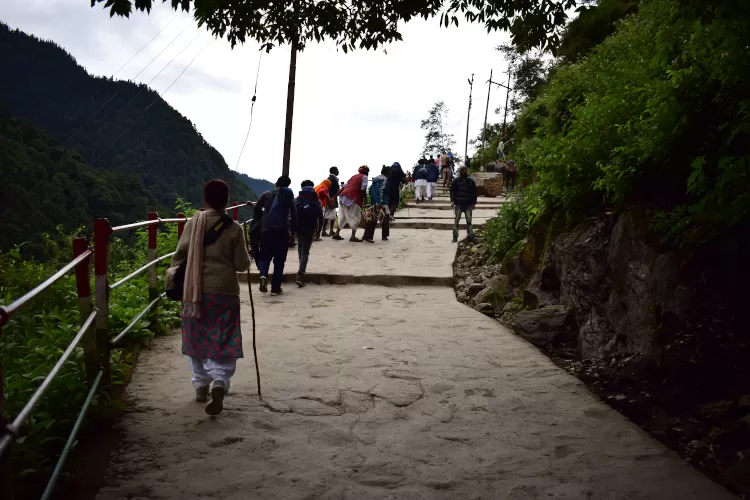
There were many people walking up the trek. Some old people who cannot afford the price of the horse ... and many with the spiritual devotion on their mind.
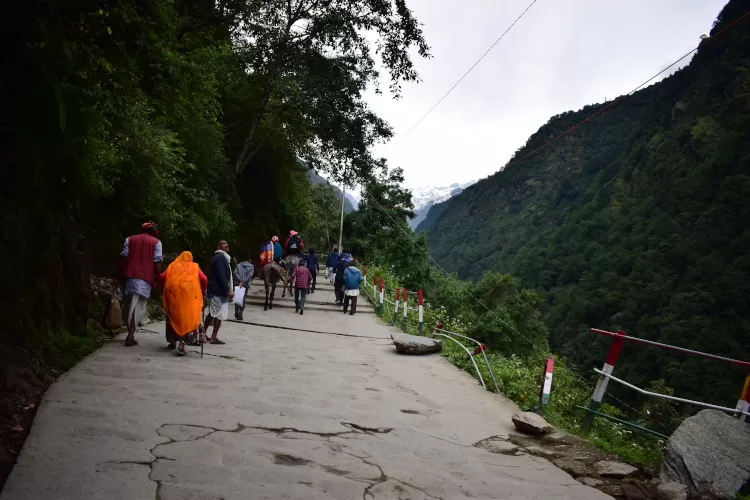
From Gauri Kund to Kedarnath it is 16 km (only). Trekking route for the first 7 km is gradual [this path is repaired after the flood]. After crossing Rambara village [which has washed away completely during the massive flood in 2013] and Mandakini river, the route gets steeper for the next 7 km [the new trek route made after the flood]. The last 2 km seemed normal, more or less like plain road. So the trek route is divided into 3 parts.
For us, experience on this 3 different phrase/parts was different and unique.
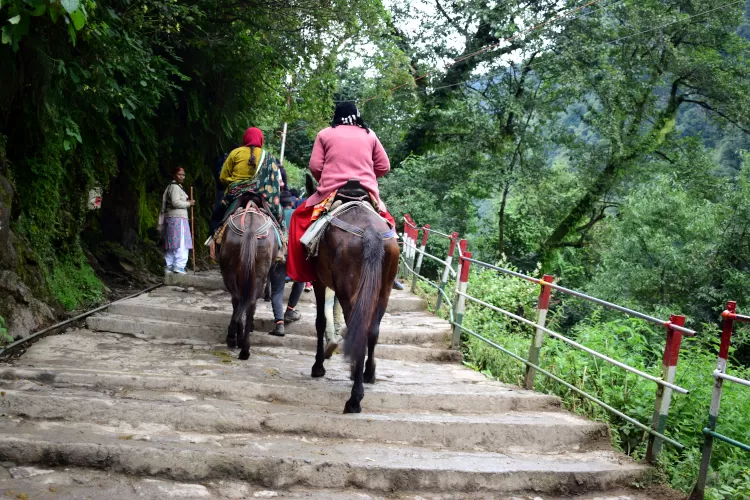
The first phrase was fine. We were sort of getting used to the walking and surrounding. One problem everyone who is walking will face initially is that walking along side the horses is difficult. Most of the people going to the temple had hired a pony/horse, so there were less people walking on the route. We soon realized that they [the horses loaded with their passengers & the owner walking by its side] were coming in groups. When we saw them coming, we stopped walking - moved to one side of the road - gave them space - and let the horse group pass. When they are gone, We continued with your walking peacefully. Enjoy the surrounding and click many photos in peace too.
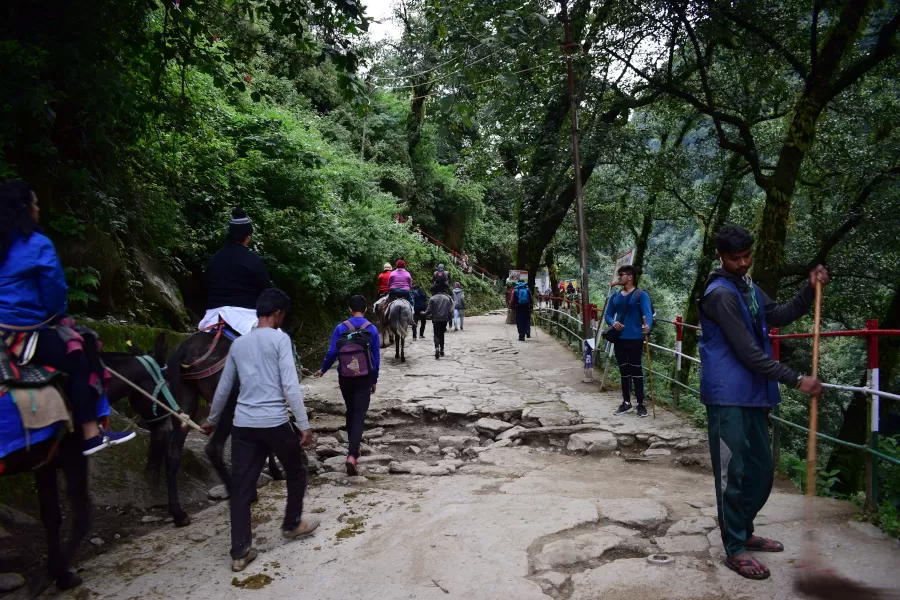
There were many people employed to sweep the road all the time and hence the road were very much clean and walk able. I haven't seen anyone littering the place. Maybe because most of them were on horse's back holding tight to prevent fall.
Whatever people may say but it is simple exploitation of pony/horse, felt sad for those speechless animals. If one is sick or old, it is understandable but capable young people going on horse back - i seriously can't understand.
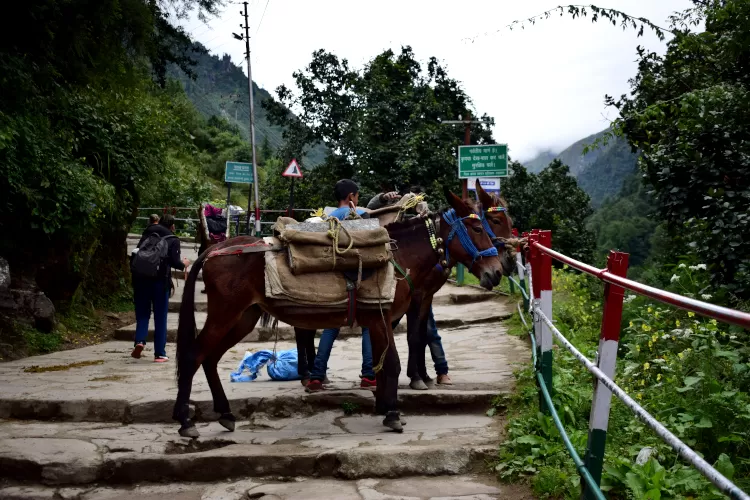
On our way back the next day, we saw a horse fallen down nearly unconscious. Three young men were kind enough to stop by and checked on it. Gods knows what has finally happened to the horse. What is actually want to say is, we should be more kind and conscious of their doing.
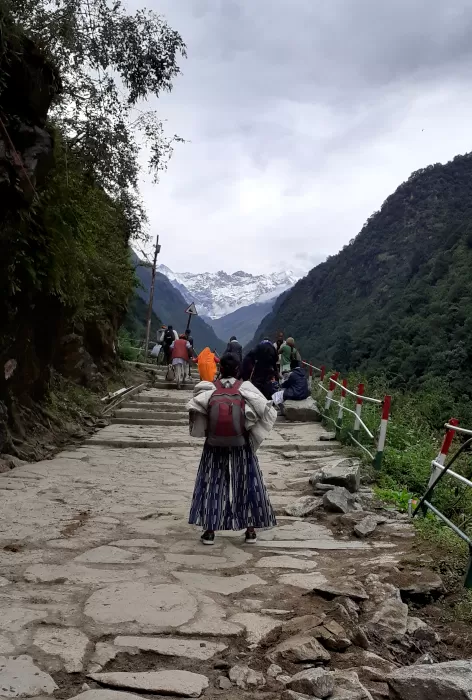
On a lighter mood : i enjoyed watching and following the fellow trekker. Everyone was walking and stopping at their own pace. So when they stop for a break - we lead them and when we stop to take photos - they catch up. It was like a one sided game still i enjoyed it.

At Rambara, there used to be village but now there was absolutely nothing. The whole village has been washed away in the flood in 2013. I had seen photographs of that place on various websites. I personally like it now, even around the Kedarnath shrine, it looked more tranquil and near to the God.
We stood on the bridge for several minutes, wandering how that tiny river had became so furious and wild that it had swept away a whole living village with it.
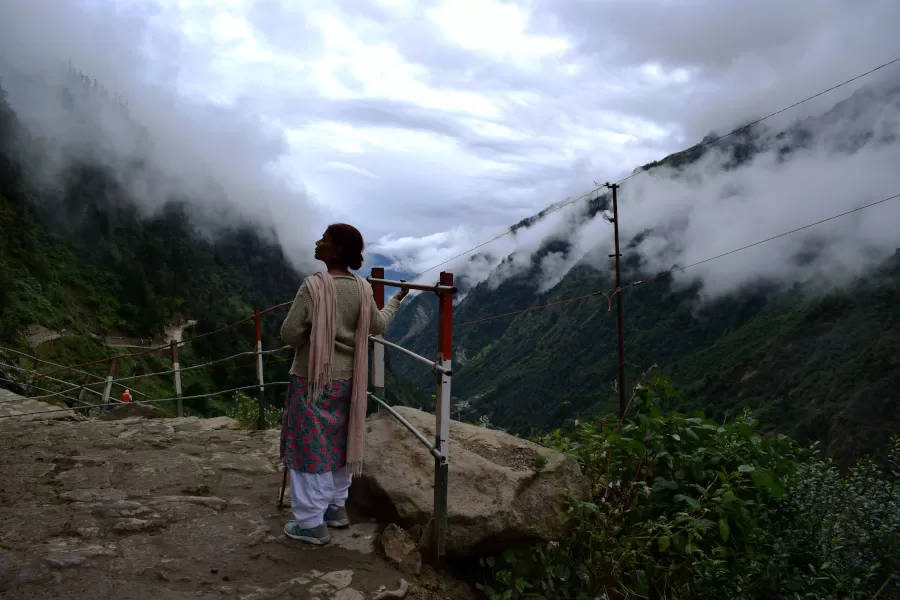
The second phrase of the trek route starts after crossing the Rambara bridge. Immediately after crossing the bridge, the road visible looked steeper. How we cope with the steep climbing ? We walked slowly and took frequent breaks. We were also rescued by the marvelous weather. There were floating clouds coming up from the Gauri Kund side. The whole valley was covered by those clouds and it was a extraordinary sight to see. It was a speechless moment for me. No words and no photographs can capture its real beauty. I felt as if i saw a passing magical moment.
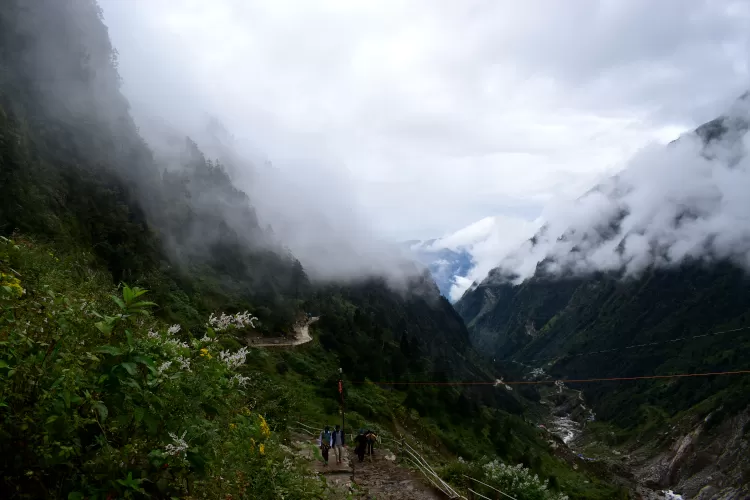
The valley and the Mandakini river gentle flowing down. The clouds - making the weather more pleasant and our walk to bearable. Devotees slowly climbing the steep hill.
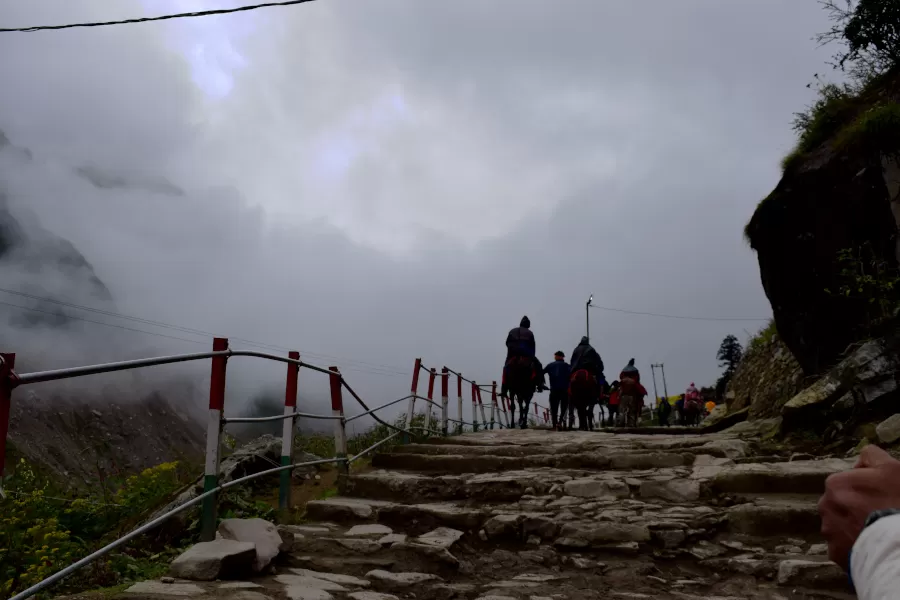
Here i want to write something : Promote tourism that also bring source of living hood to the local people is good and i support it too. To make a balance between human profit and preservation of nature, the government should check and make strict rules. The nature and its beauty shouldn't get damage, we don't own the mountains - the rivers - the waterfalls and the trees. So by cutting them down and building hotels and lodges or personal houses ie. destroying the nature is a crime against nature. It should be a part of responsible tourism.
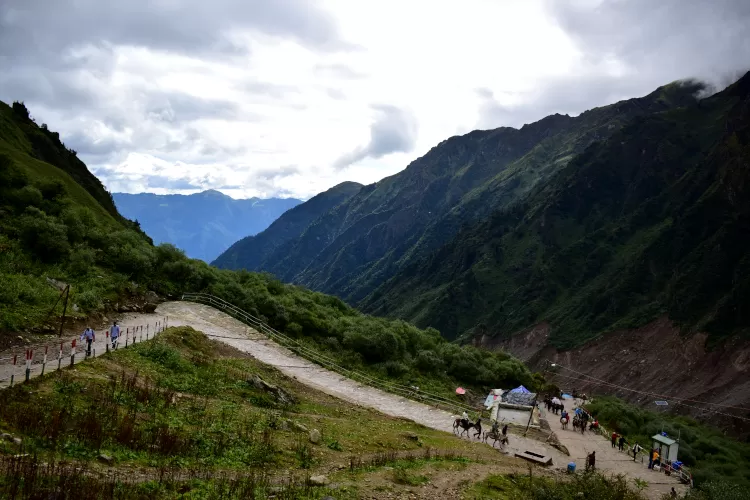
The steep up hill climb ... sometime we cheated by taking the mud path - which was sort of risky as we may slip and injured ourselves. Though it was fun.
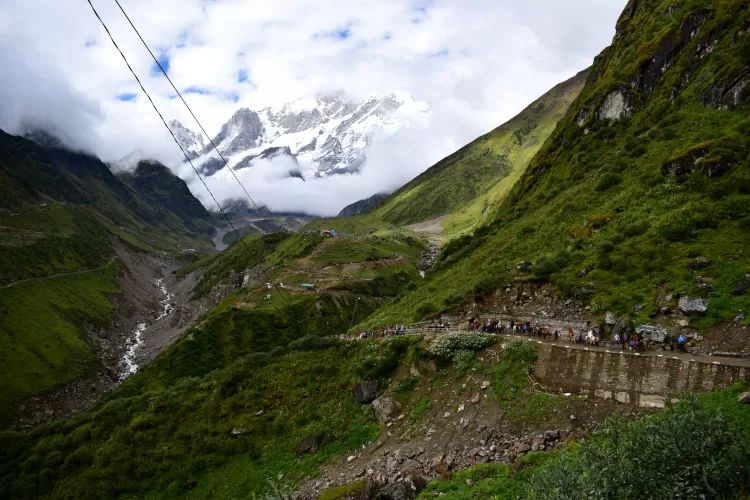
After seeing this sight, we got that extra energy to walk again but of course not without taking few photo and stand there for another 15 minutes just staring at the mountains.
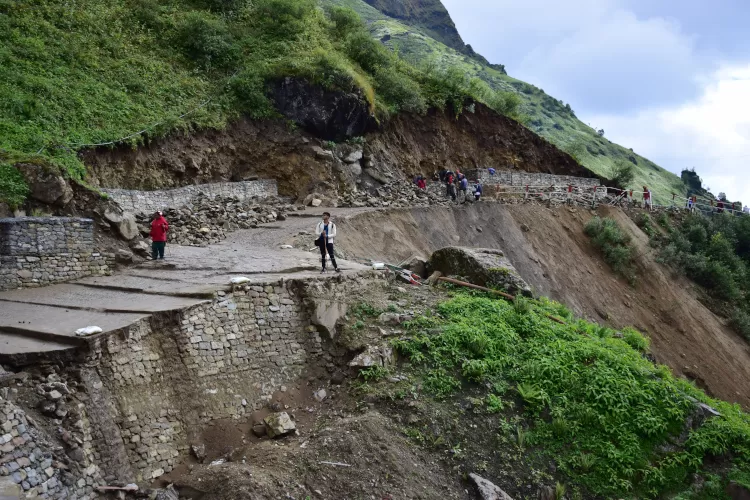
Road mending work was in progress. Thousands of people come to visit Kedarnath temple every year. So many devotees and horses go up and down this path making the road mending job a tough one. Rain makes the matter worse ... this patch of the road was real difficult in term of walking on narrow path along with the horses.

Everyone was saying that these are glaciers but by definition they don't match. After searching on the net for a long time - i didn't get the satisfied answer. Then i all of a sudden got to know about it on a trekking vblog that they are called "Snow Bridge". One can walk on it too - of course with proper guidance and equipment.
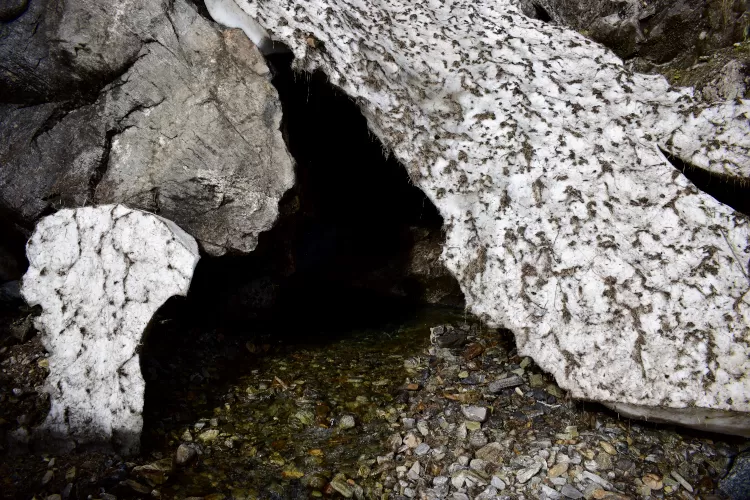
Snow bridges are frozen waterfall/river, beneath the thick frozen ice, water still flow as crystal clear streams. I wonder if they ever completely melt away as in form of waterfall. I know, in April - May these snow bridge covers the whole road. One has to walk over to cross it. Even in end of September, it didn't melt ... it will be winter soon - it won't melt then too. So i assume, it is frozen throughout the year. The photograph actually does not real show how marvelous it look with naked eyes - especially the above one.
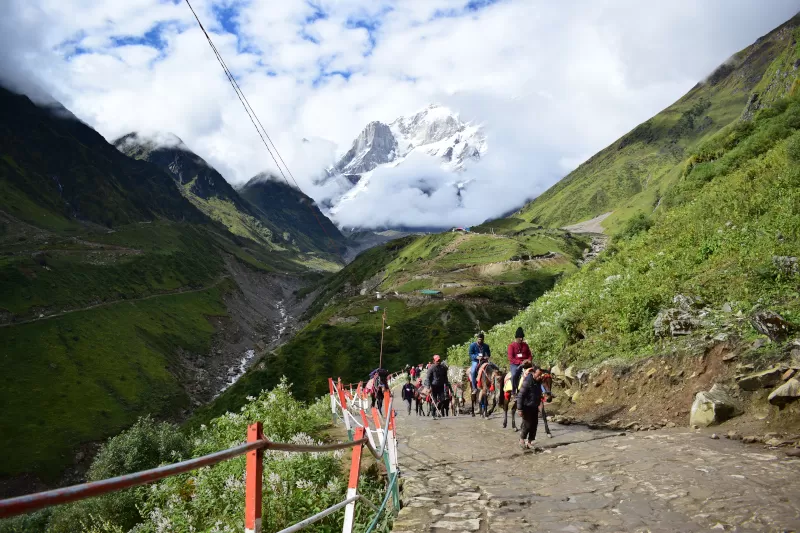
After some 7 odd hours, witnessing some wonderful landscape and numerous waterfall - one exceeding the other in terms of beauty, we finally reached the top. By top i mean, there were no steep climb after this point. This is the third phrase of the trek route and the shortest and easiest. We had to walk nearly 2 km from here to Kedarnath shrine. On our way, we checked in the GMVN cabin, where we're staying for the night.
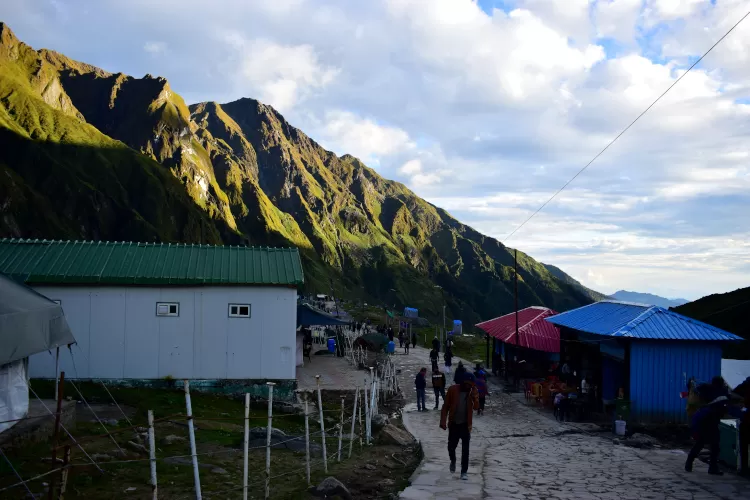
Where we stayed : the food and accommodation -
There are many tents, huts, and cottages run by the GMVN ie. Garwal Mandal Vikas Nigam. We stayed in a 6 bed cottage (Rs.750/person) with attached 2 bathroom with geyser. Each bed had 2 blankets, which were heavy but clean and soft. Spend the night very comfortably.
Information about other accommodation run by the GMVN:
1. Tent - 10 person accommodation provided with mattress and blankets. One toilet outside the tent for all 10 person with no water. Fare - Rs. 300/person.
2. Hut - 10 person accommodation provided with bunk bed and blankets. One attached toilet with geyser. Fare - 550/person.
3. Cottage - Same as the one we were staying.
Fare of accommodation may vary depending on the season ... peak season high rent - off season low rent.
There are private hotels, lodges, guest house and dharmshalas as well. It would be wise able to book them in advance as they get book very quickly. Availability of room on arrival is difficult.
There are many government run canteen which provided food at a fixed price. The food canteen was just in front of our cottage and the food was simple and super delicious - consisting of roti (chapati), sabzi (seasonal vegetable), dal (lentil) - rice.
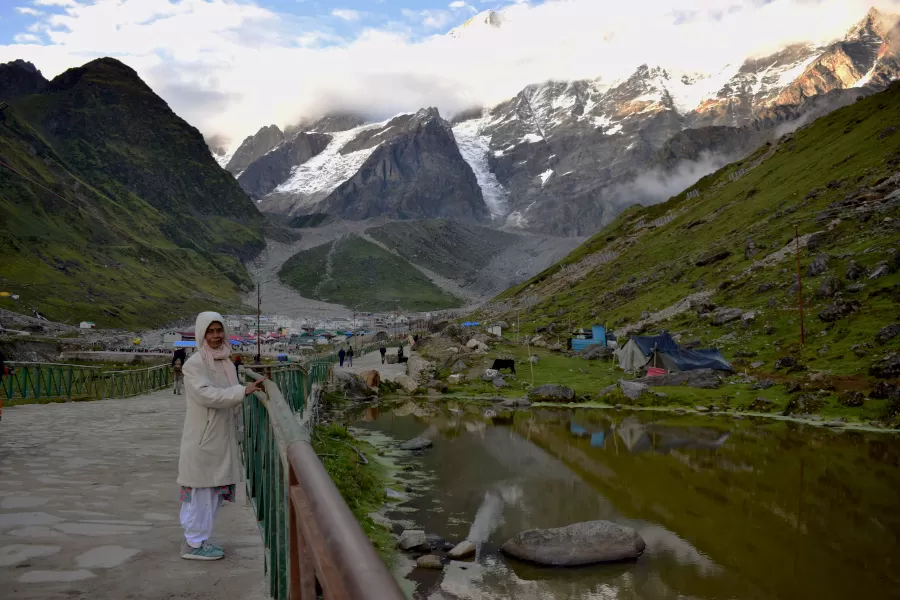
We wore all the warm clothes - jacket, muffler, woolen gloves. The sun was about to set, we walked towards the temple. The towering white snow clad mountain was looking like a God itself - changing colors from orange to gold to pink ... marvelous sight. Watched this moment speechlessly too.
When we reached the temple, the sun was still setting down and it was getting darker minute by minute. There was a long queue outside the temple and took us nearly 1 1/2 hours to enter it. The waiting was good too. Enjoyed and felt every moment of being there amidst such beautiful surreal surrounding. People in groups were singing devotional song and chanting mantras, making that moment more emotional and spiritual.
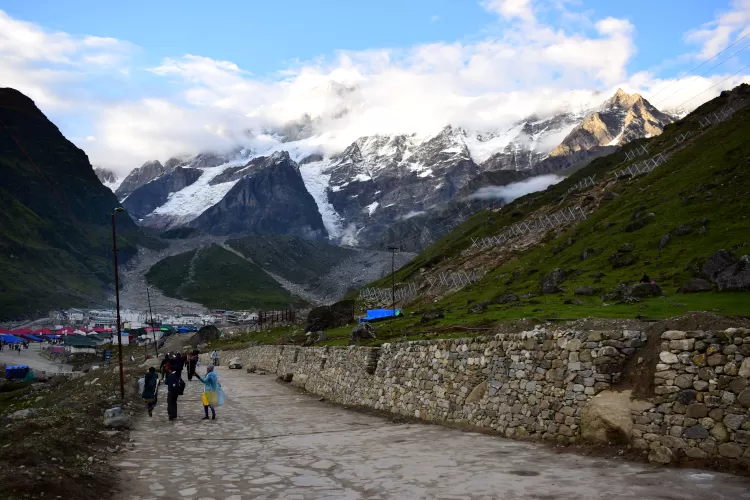
Experience inside and outside the temple :
Inside the temple, it was not over crowded like it is in April - May (peak season), still we didn't get to stand in front of the main temple door for even 10 seconds. I just remember that i saw a tringular form covered (i mean decorated) with colorful flowers with "Shash Nag" towering over the triangular form. Later i came to know that it was the conical shape rock, which i had read about. As I had not seen the "Lingam" in the front, i assumed that it was kept behind the conical rock form. Everything was decorated with flowers and because we didn't get enough time to get a proper glimpse inside the temple, i really wouldn't figure out where the "Lingam" was. Maybe in the morning, when there is no flower decorations, we might have seen it much easily and properly. Flower decoration has its own charm and beauty too. i had seen it that way hence i liked it that way.
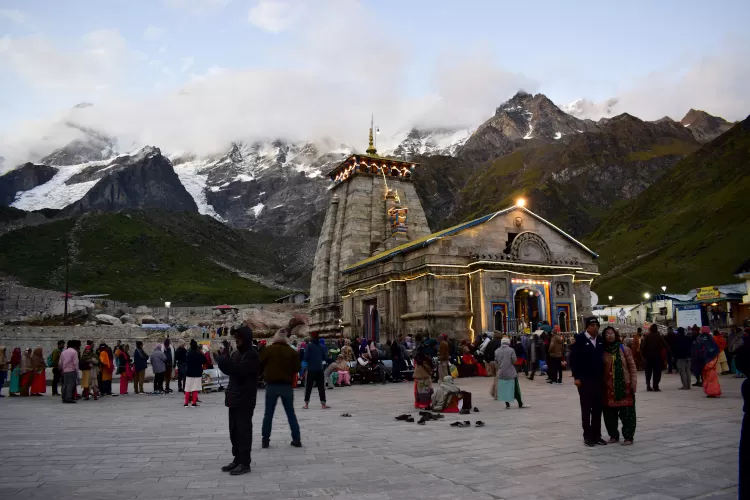
Anyway, i believe that the Lord is not only residing inside the temple. HE is everywhere - in the chill fresh air - in the last rays of the setting sun - in the flowing water of Madakini river or maybe on Nandi's (the Bull) back ... taking in some fresh air. Everything is possible - it's a belief after all. I am sure HE doesn't always like to be dress up and sit inside the temple all the time, so that HIS devotees get a glimpse of HIM. I am sure HE is everywhere.
Enough of my thoughts and theories - Lets move on !
There are few interesting facts and tales about the Kedarnath Temple:
1. Kedarnath temple is dedicated to Lord Shiva. It is worshiped in form of "Lingam" which is irregular in shape. This is one of the 12 Jotrilingam. There is also a conical shaped rock which is also worshiped as Sadashiva (a form of Lord Shiva).
2. The story behind why it is worshiped as Lingam. According to folk legend - Nara & Narayan (two incarnations of Lord Vishnu) went to Kedarnath and worshiped Lord Shiva. Pleased with their devotion, Lord Shiva appeared in front of them and offered them a boon. In return, they asked Lord Shiva to stay there in his original form (that is the Lingam form) for the salvation of mankind. Lord Shiva granted them their wish and made Kedarnath His home. Hence the worship of the Lingam.
3. Second story : Post was, the Pandava brothers wanted to seek Lord Shiva's forgiveness as they had killed their kins durning the war. Lord Shiva didn't want to see them hence turned in to a bull and tried to disappear by sinking himself (head first) in the ground. One of the Pandava brother (Bhima) caught hold of the bull from the back. He wanted to pull him out and force him to reappear. Lord Shiva disguised as a bull, did appeared but in 5 different parts and in 5 different places (ie. the face at Rudranath - arms at Tungnath - navel & stomach at Madhyamaheshwar - hairs at Kalpeshwar - and Hump at Kedarnath). Hence the worship of the conical shaped rock.
4. The temple is believed to be built in the 7th - 8th century by the Pandavas of Mahabharat. Later reconstructed by Adi Shankaracharya in the 12th century (not sure).
5. The temple is built using large stone slabs and it is built on a 6 ft high rectangular platform.
6. The temple consist of 2 parts : the front part or the hall which has a lower roof compare to the back part or the main temple. The front hall has many deities statues (from Mahabharat) curved on its wall. The back part, which is the main temple has the "Lingam" and the conical rock form. Outside the temple - there is a huge statue of Nandi - the bull.
7. There are many pujas performed or held in the Kedarnath temple. Four pujas in the morning and two pujas in the evening. The minimum cost of the puja is Rs. 340/person and maximum Rs.1700/person (money business everywhere). "Darshan" is free ... Thank God for that !
8. Geologists say that the temple was under the snow for nearly 400 years (1300 - 1900 AD). This period is also known as "Little Ice Age". Scientists say that people who built the temple knew the terrain very well ie. they knew about the formation of snow & glaciers. They made the temple strong enough to withstand natural disaster.
9. There is a massive boulder just behind the temple, which is believed to have save the temple during the 2013 epic flood, by blocking the path of the water and saved the temple from being washed away. Everyone believes in miracle, i am sure nobody is interested in knowing how strong the temple is built.
10. Due to the extreme weather, the temple is open to the public from April (Akshaya Tritiya) till November (Kartik Purnima - Autumn full moon). The deity is carried down to Ukhimath. There it is worshiped for the next 6 months.
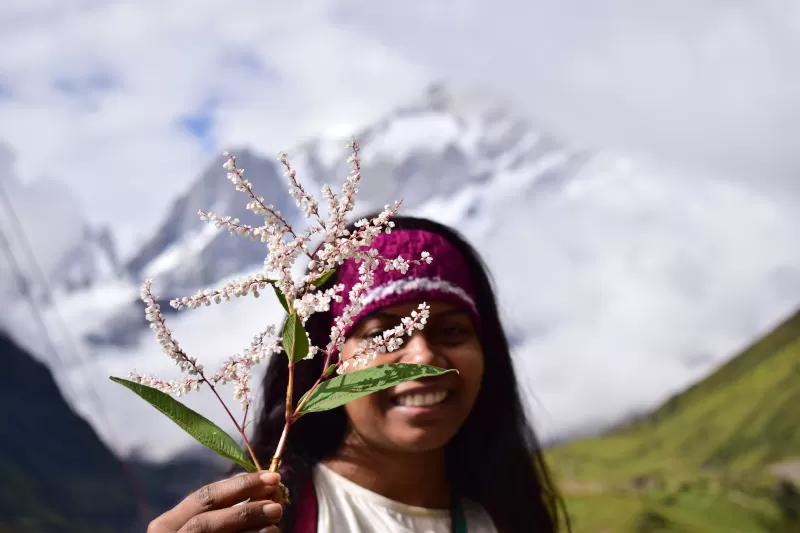
Next day ... descending journey to Gauri Kund :
Next day, we began our descending journey at 05:30 in the morning. Only me & Maa were coming by foot, others were taking the horse. We didn't stop much in the way as we had to reach Gauri Kund as fast as possible.
Two noticeable thing happened during the journey :
1. As we were walking down the hill, i was surprised and couldn't believe that we had actually climbed those steep up hill path.
2. Walking down hill gave us sore legs, i couldn't believe that too. When we went to Kedarnath temple, we had no body ache - no pain - absolutely nothing - but while coming down hill, our leg were sore and had body pain too. Next day we were fine.
3. Coming down from Kedarnath to Gauri Kund on horse is more painful and fearful experience as told by my co-traveler.
We completed our return journey in 4 1/2 hours. This was the end of our Kedarnath trip ... from here we headed towards Badrinath temple.
P.S. We had left all our bag and baggage at Sonprayag hotel. Trekked with only the things that we required on that particular trek and stay at Kedarnath.



